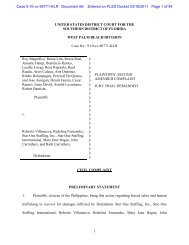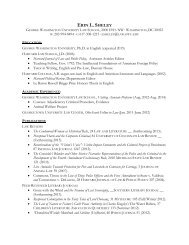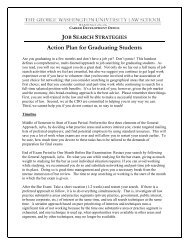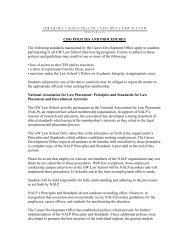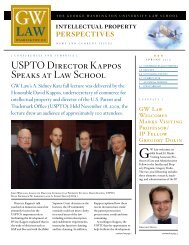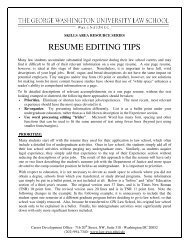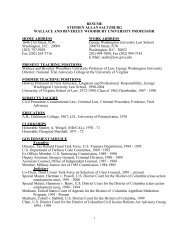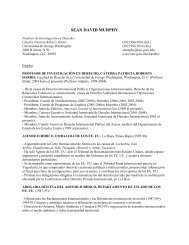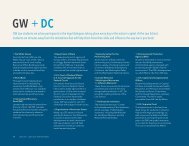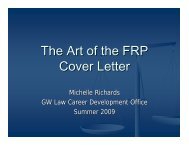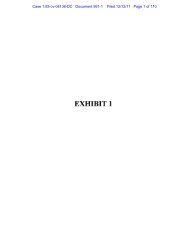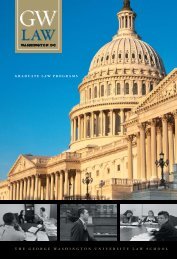CLE Materials for Panel #1 - George Washington University Law ...
CLE Materials for Panel #1 - George Washington University Law ...
CLE Materials for Panel #1 - George Washington University Law ...
You also want an ePaper? Increase the reach of your titles
YUMPU automatically turns print PDFs into web optimized ePapers that Google loves.
WILMARTH<br />
4/1/2011 1:11 PM<br />
2011] The Dodd-Frank Act 955<br />
Parts II and III of this Article briefly describe the consequences and<br />
causes of the financial crisis that led up to the enactment of the Dodd-<br />
Frank. As discussed in those sections, LCFIs were the primary<br />
private-sector catalysts <strong>for</strong> the crisis, and they received the lion’s<br />
share of support from government programs that were established<br />
during the crisis to preserve financial stability. Public alarm over the<br />
severity of the financial crisis and public outrage over government<br />
bailouts of LCFIs produced a strong consensus in favor of financial<br />
re<strong>for</strong>m. That public consensus pushed Congress to enact Dodd-<br />
Frank. As Part IV explains, governmental rescues of LCFIs<br />
highlighted the economic distortions created by TBTF policies, as<br />
well as the urgent need to reduce public subsidies created by those<br />
policies.<br />
In an article written a few months be<strong>for</strong>e Dodd-Frank was enacted,<br />
I proposed five re<strong>for</strong>ms that were designed to prevent excessive risk<br />
taking by LCFIs and to shrink TBTF subsidies. My proposed re<strong>for</strong>ms<br />
would have (1) strengthened existing statutory restrictions on the<br />
growth of LCFIs; (2) created a special resolution process to manage<br />
the orderly liquidation or restructuring of SIFIs; (3) established a<br />
consolidated supervisory regime and enhanced capital requirements<br />
<strong>for</strong> SIFIs; (4) created a special insurance fund, pre-funded by riskbased<br />
assessments paid by SIFIs, to cover the costs of resolving failed<br />
SIFIs; and (5) rigorously insulated FDIC-insured banks that are<br />
owned by LCFIs from the activities and risks of their nonbank<br />
affiliates. 10<br />
Part V of this Article compares the relevant provisions of Dodd-<br />
Frank to my proposed re<strong>for</strong>ms and evaluates whether the new statute<br />
is likely to solve the TBTF problem. Dodd-Frank includes provisions<br />
(similar to my proposals) that make potentially helpful improvements<br />
in the regulation of large financial conglomerates. The statute<br />
establishes a new umbrella oversight body (the Financial Stability<br />
Oversight Council) that will designate SIFIs and make<br />
recommendations <strong>for</strong> their regulation. The statute also authorizes the<br />
FRB to apply enhanced supervisory requirements to SIFIs. Most<br />
importantly, Dodd-Frank establishes a new systemic resolution<br />
regime (the Orderly Liquidation Authority (OLA)) that should<br />
provide a superior alternative to the choice of “bailout or bankruptcy”<br />
that federal regulators confronted when they dealt with failing SIFIs<br />
during the financial crisis.<br />
10 See Wilmarth, supra note 6, at 747–79.




